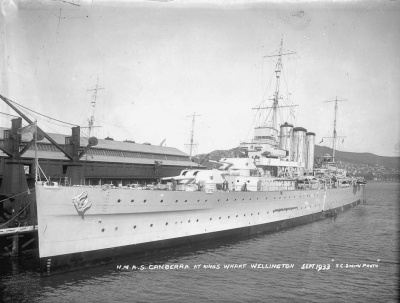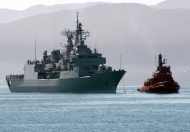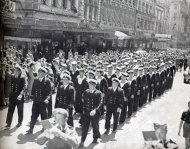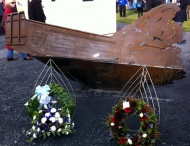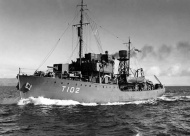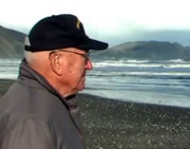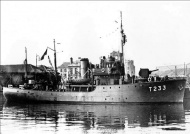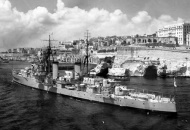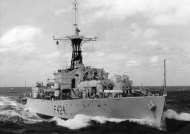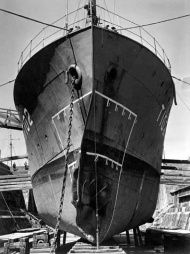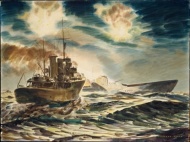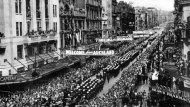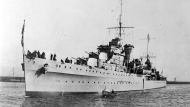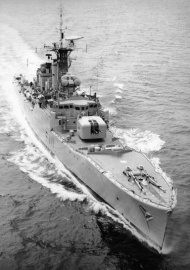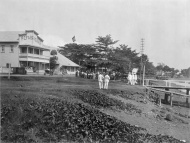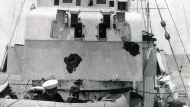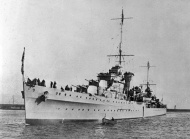Events In History
-
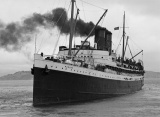 15 August 1951Troopship Wahine wrecked en route to Korea
15 August 1951Troopship Wahine wrecked en route to KoreaThe TSS Wahine was chartered by the New Zealand government to transport Kayforce troops to the Korean War. Shortly after leaving Darwin it ran aground on Masela Island in the Arafura Sea, east of Timor. Read more...
-
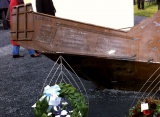 20 June 1943US Navy tragedy at Paekākāriki
20 June 1943US Navy tragedy at PaekākārikiTen United States Navy personnel drowned off the Kāpiti Coast, north of Wellington, during a training exercise in bad weather. Read more...
-
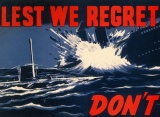 24 May 1943Turning point in Battle of the Atlantic
24 May 1943Turning point in Battle of the AtlanticIn the Battle of the Atlantic, one of the most important campaigns of the Second World War, 24 May 1943 was a crucial date. Thousands of New Zealanders took part in this long and bitter struggle. Read more...
-
 11 November 1942Troopship Awatea goes down fighting
11 November 1942Troopship Awatea goes down fightingThe Union Steam Ship Company of New Zealand’s sleek 13,482-ton trans-Tasman liner Awatea, launched in 1936, was one of the finest and fastest ships of its size in the world at the outbreak of the Second World War. Read more...
-
 3 August 1941Finnish sailing ship seized as war prize
3 August 1941Finnish sailing ship seized as war prizeFive days after its arrival in Wellington, the four-masted barque Pamir was seized in prize by the New Zealand government. Read more...
-
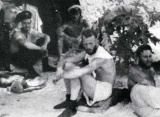 27 November 1940Liner sunk off East Cape
27 November 1940Liner sunk off East CapeThe 16,712-ton New Zealand Shipping Company liner Rangitane was intercepted and sunk 550 km off East Cape, with the loss of 15 lives. Read more...
-
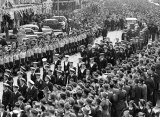 23 February 1940100,000 Aucklanders welcome home HMS Achilles
23 February 1940100,000 Aucklanders welcome home HMS AchillesThe Battle of the River Plate in December 1939 was the Allies’ first naval victory of the Second World War. The involvement of the cruiser HMS Achilles, more than half of whose crew were New Zealanders, was greeted with jubilation in New Zealand. Read more...
-
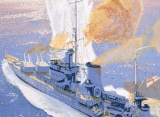 13 December 1939Battle of the River Plate
13 December 1939Battle of the River PlateWhen the cruiser HMS Achilles opened fire on the German pocket battleship Admiral Graf Spee in the South Atlantic, it became the first New Zealand unit to strike a blow at the enemy in the Second World War. Read more...
-
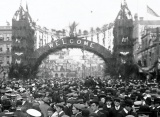 9 August 1908US 'Great White Fleet' arrives in Auckland
9 August 1908US 'Great White Fleet' arrives in AucklandSixteen American battleships arrived in New Zealand with much pomp and ceremony. Read more...
Articles
Royal NZ Navy's Bird-class ships
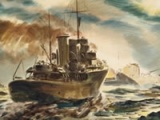
October 2011 marks the 70th anniversary of the formation of the Royal New Zealand Navy. In 1941 the new navy had three brand-new ships – the Moa, Kiwi and Tui – working up or fitting out in Scotland. These little Bird-class minesweepers would see dramatic action in the Pacific War.
-
Page 2 – 'Pocket corvettes'
The Birds were unusual. Although they looked a little like the Admiralty’s Isles-class minesweeping trawlers, their extended forecastles gave them more of a naval look
-
Page 3 – Early wartime duties
When the ships finally arrived at Auckland between April and August 1942, after lengthy voyages, they joined the 25th Minesweeping Flotilla
-
Page 4 – Moa and Kiwi bag a sub
On the night of 29 January Kiwi and Moa were patrolling along Kamimbo Bay, on the north-western corner of Guadacanal when Kiwi detected a submarine
-
Page 5 – The sinking of the Moa
On 7 April 1943, while refuelling from the American oil barge Erskine M. Phelps at Tulagi Harbour, in the Solomons, the Moa came under attack from Japanese aircraft
-
Page 7 – The Tui goes hunting
The minesweeper Tui’s turn to claim a scalp came in August 1943
-
Page 6 – Peacetime years
The RNZN downsized after the war, although it remained much bigger than the pre-war New Zealand Division.
-
Page 8 – Further information
Links and books relating to New Zealand Bird-classs minesweepers
HMNZS Leander
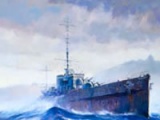
When the Royal New Zealand Navy came into being on 1 October 1941, its main combat units were two Leander-class cruisers: Achilles and Leander. Although its early war was quieter than the Achilles, the Leander was to see dramtic action in the Pacific War.
-
Page 2 – Leander-class light cruisers
Facts and stats about Leander-class light cruisers
-
Page 3 – Leander goes to war
By mid-1940 Leander was escorting convoys in the Red Sea and Aden areas. In between escorting merchant ships, the cruiser further pummelled the Italian submarine
-
Page 4 – Pacific attack
After some early successes, Leander’s war came to an end when it was hit by a long-range Japanese torpedo
-
Page 5 – Recovery and repair
Leander was hit just abaft the ‘A’ boiler room. Almost 500 kg of high explosive killed everyone in the boiler room. The blast, venting up through the boiler room duct, blew
The Royal New Zealand Navy
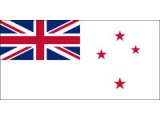
Seventy years old in October 2011, the Royal New Zealand Navy is today an integral part of the New Zealand Defence Force. But its 1941 establishment was the result of a long process of naval development.
-
Page 2 – Origins
Although some gunboats were acquired by the colonial government during the New Zealand Wars in the 1860s and torpedo boats for the coast defences in the 1880s, the genesis of
-
Page 3 – First World War
When the Reform government took office in 1912, the way was opened for New Zealand to begin a new approach. The new minister of defence, James Allen, had long wanted New
-
Page 4 – NZ Division of the Royal Navy
The First World War experience convinced Allen that New Zealand’s approach to naval defence had been on the right lines.
-
Page 5 – Second World War
On 1 October 1941 an order-in-council changed the name of the New Zealand Division of the Royal Navy to Royal New Zealand Navy.
-
Page 6 – Post-war operations
Like all the services the RNZN faced difficulties of readjustment to peacetime conditions, not only in drastically reducing numbers but also in determining the shape of the
Prisoners of War
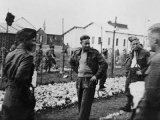
During the Second World War New Zealanders became prisoners of war in large numbers. Most Kiwi POWs were soldiers captured in Greece, Crete and North Africa. In total, more than 8000 were held in captivity - one in 200 of New Zealand's population at the time.
- Page 2 - CaptureMost of New Zealand's Second World War POWs were captured in the European theatre in the early stages of the war. Only about 100 New Zealand servicemen fell into Japanese hands,
First World War - overview
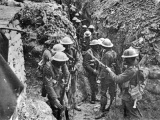
Archduke Franz Ferdinand, heir to the throne of the Austro-Hungarian Empire, and his wife Sophie were assassinated in the Bosnian city of Sarajevo. This was a key event in sparking the Great War of 1914–18.
-
Page 6 – The legacy of war
The war had a major impact on constitutional arrangements within the British Empire, and it affected New Zealand's international status.
HMS Philomel
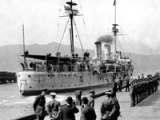
New Zealand's first warship, HMS Philomel formed the core of the country's naval forces during the First World War. The aged and largely obsolete vessel was commissioned in New Zealand in July 1914, and went on to serve in the Pacific, Mediterranean and Middle East.
- Page 1 - NZ's first warshipNew Zealand's first warship, HMS Philomel formed the core of the country's naval forces during the First World War. The aged and largely obsolete vessel was commissioned in New
Biographies
-
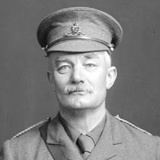 Allen, James
Allen, James
As Minister of Defence from 1912 until 1920, James Allen was responsible for the organisation of New Zealand’s military forces during the First World War.
Read more...
Related keywords
- shipping
- WW2
- royal new zealand navy
- painting
- wellington city
- united states
- paekakariki
- marines
- disasters
- pacific war
- hmnzs leander
- american forces
- korean war
- 1950s
- royal navy
- nuclear free
- malayan emergency
- vietnam war
- DDay
- WW2 stories
- oral history
- battle of the river plate
- great white fleet
- WW1
- hms new zealand
- hms philomel
- battle of jutland
- HMS Achilles
- parades
- auckland city
- japanese
- submarine
- percival hall-thompson
- devonport
- german samoa occupation
- edward knowles
- waitangi day
- flags
- ferries
- central powers
- austro-hungarian empire
- war memorials
- waitangi
- samoa
- prisoners of war
- merchant navy
- royal new zealand air force
- james allen
- dunedin
- MPs
- reform party
- international relations
- 1960s
- lord cobham
- british empire
- international trade
- lord jellicoe
- new zealand volunteers
- cadets
- german navy
- league of nations
- pacifism
- national identity
-
Main image: HMAS Canberra
HMAS Canberra berthed at King's Wharf, Wellington, 1933.

